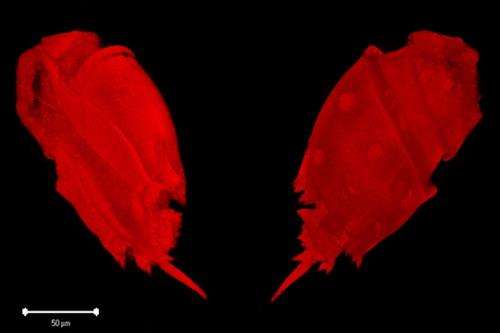Excrement collected worldwide shows co-evolution of herbivores and their gut microbes

An extensive study by Radboud University Nijmegen on excrement and rumen fluids in plant-eating mammals from all over the whole world shows that the ciliates in their guts have evolved in parallel with them. This is the result of a five-year research project performed by evolution biologists, microbiologists and computer scientists at Radboud University Nijmegen and published this week in the European Journal of Protistology.
Herbivorous mammals are able to digest plant materials extremely efficiently thanks to certain micro-organisms in their gastro-intestinal system. There, the ciliates, one-celled organisms bearing hair-like structures, are especially important. By investigating ciliates in excrement and gut fluids, the researchers in Nijmegen have been able to shed light on the evolution of two sorts of herbivores: 'foregut fermenters' such as cows, goats and sheep, and 'hindgut fermenters' such as horses, elephants and zebras. In hindgut fermenters food is digested in the posterior part of the gut – in the appendix and large intestine. In foregut fermenters, better known as ruminants, that process takes place in the first part of the gut (rumen).
Excrement from all over the world
For this investigation, excrement and rumen fluids were collected worldwide. The sources included Nijmegen goats, French deer, sheep from Poland and Utrecht, an Indian elephant from Burger's Zoo in Arnhem, and zebras and an African elephant from Tanzania. All the samples were collected when fresh, fixed in acetone and then sent by post to the Netherlands.
Ciliate DNA
Extensive genetic research into ciliates to analyse their family tree, diversity and distribution over hosts involved investigating 484 '18S rRNA genes', the fragments of RNA responsible for protein synthesis. 'Our most important discovery is that ciliates are extremely diverse', says evolution biologist Johannes Hackstein. 'We hadn't expected that, given their appearance.' It turned out that the ciliates of hindgut fermenters were very species-specific and originated early on in evolution, just like the hosts themselves. The ciliates of foregut fermenters are not species-specific and evolved much later. So, from the evolutionary point of view, the oldest animals have the oldest ciliates in their excrement.
Transmission
According to Hackstein, a possible explanation for the differences is the way ciliates are transmitted. 'In hindgut fermenters transmission occurs via coprophagy (eating excrement), and that happens almost exclusively in extremely young offspring. Ruminants, on the other hand, can be infected with ciliates throughout their lives. However, this still does not explain how the huge ciliate diversity arose and how this can be sustained.'
More information: "The symbiotic intestinal ciliates and the evolution of their hosts" by Staay, S.Y.M.-v., van der Staay, G.W.M., Michalowski, T., Jouany, J.-P., Pristas, P., Javorsk´y, P., Kiˇsidayov´a, S., Varadyova, Z., McEwan, N.R., Newbold, C.J., van Alen, T., de Graaf, R., Schmid, M., Huynen, M.A., Hackstein, J.H.P., European Journal of Protistology (2014) dx.doi.org/10.1016/j.ejop.2014.01.004
Provided by Radboud University Nijmegen

















